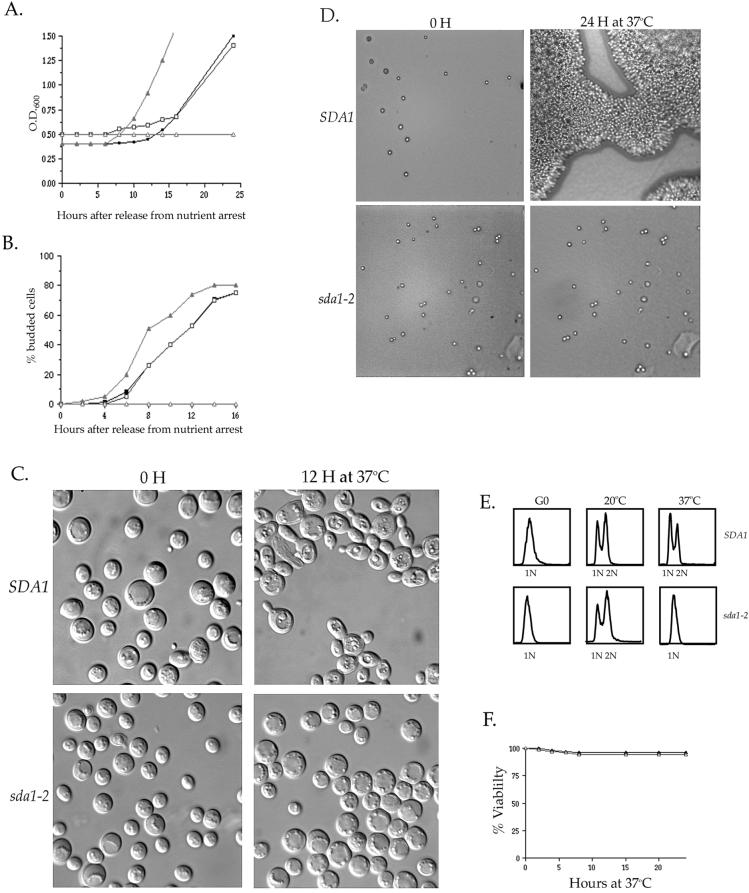Figure 3.
Sda1 is required for entry into the cell cycle from a G0 arrest. (A) Wild-type and sda1-2 cells were arrested in G0 by nutrient depletion and then released into fresh media at the permissive temperature (20°C) or the restrictive temperature (37°C). Cell proliferation was monitored by measuring the O.D600 of the culture over a period of 24 h. At the permissive temperature, wild-type (▪) and sda1-2 cells (□) proliferate at the same rates. At the restrictive temperature, wild-type cells (▴) proliferate, but the sda1-2 cells (▵) fail to proliferate. (B) The percentage of cells with buds was counted during an identical time course. At the permissive temperature, wild-type (▪) and sda1-2 cells (□) undergo budding at the same rates. At the restrictive temperature, wild-type cells (▴) bud, however the sda1-2 cells (▵) fail to bud. (C) Nomarski images of the G0-arrested wild-type and sda1-2 cells released into fresh media at the restrictive temperature. Pictured are the 0- and 12-h time points. (D) G0-arrested wild-type and sda1-2 cells were plated onto solid media at the restrictive temperature and the same field of view was observed under a microscope over a period of 24 h. Pictured are the 0- and 24-h time points. (E) DNA content measured by fluorescence-activated cell sorter analysis of wild-type and sda1-2 cells at G0 and after 8 h in fresh media at 20 and 37°C. (F) Measurement of the percentage of G0-arrested wild-type (▴) and sda1-2 cells (▵) that remain viable when released onto fresh YPD plates at the restrictive temperature. Percentage of viability was determined by dividing the number of colonies formed at each time point by the number of colonies at time 0 h.

